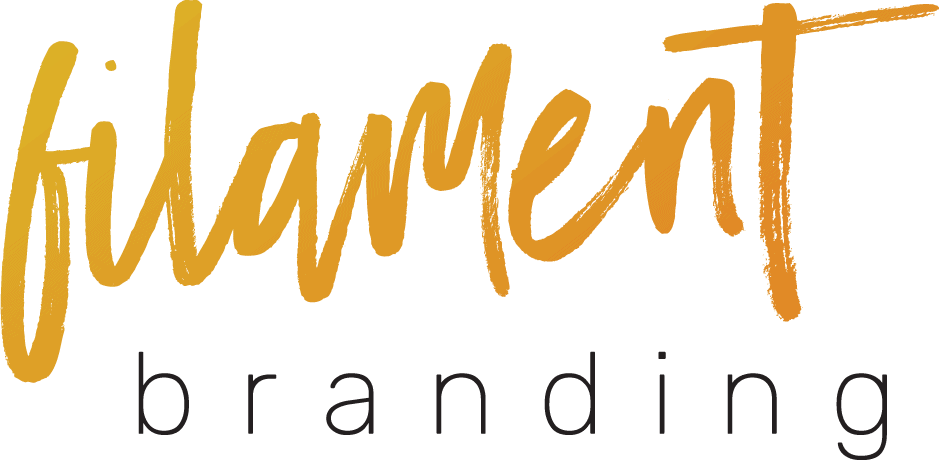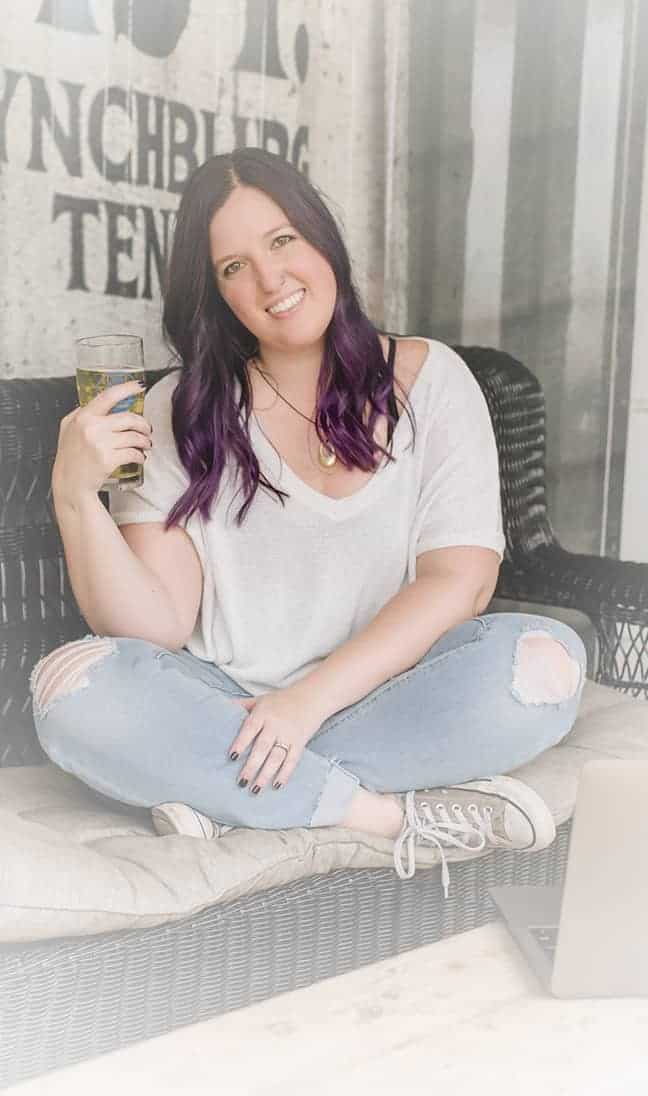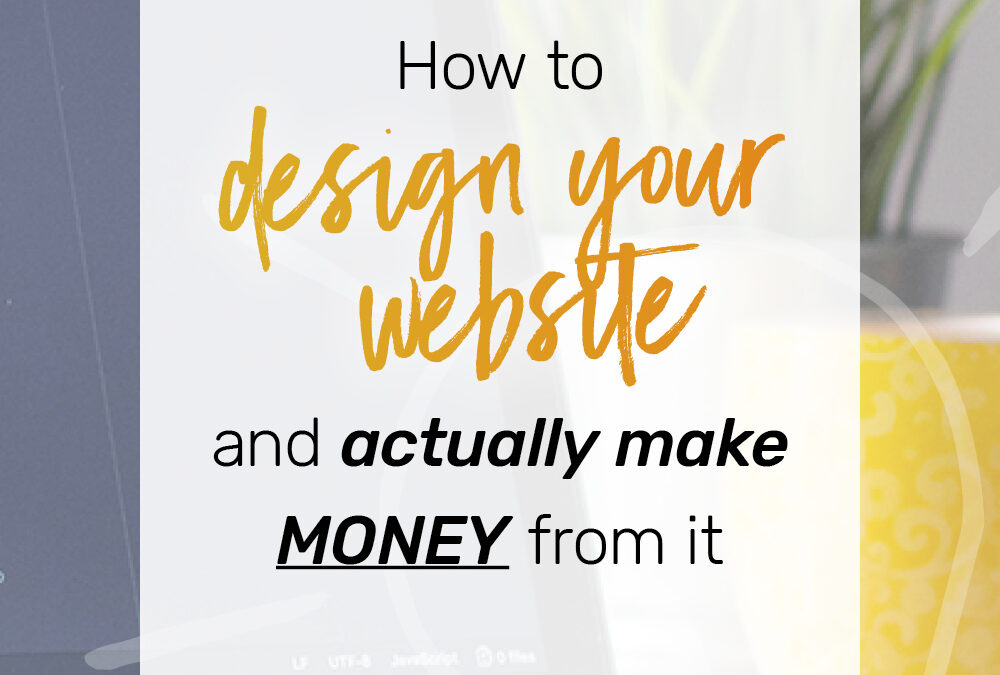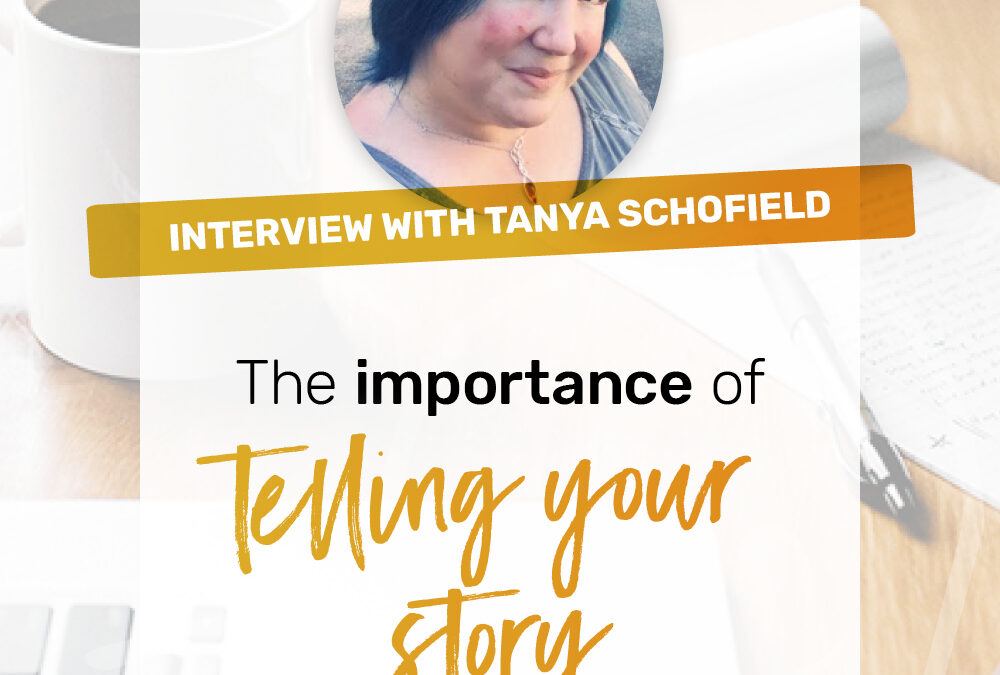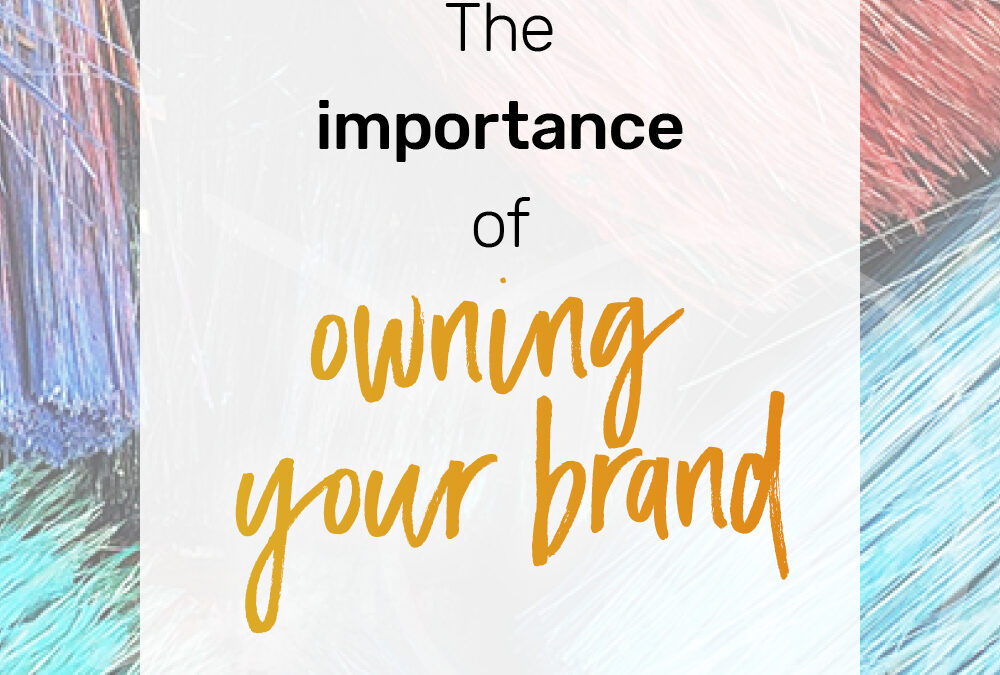Hey everyone. Okay, websites. First up – what are the most important pages to have on your website? That is the number one question that I get asked honestly about websites – other than how to make it look pretty. That’s probably the number one actually. The most important pages to have on your website, we’ll just start at the top: home page. Duh. I think everybody knows that one. A home page is really important. And actually before I dig into these questions, I just want to give a couple overarching tips about websites in general. I talked a little bit about this in last week’s design call, but I’m going to go into it again a little bit deeper.
The purpose of your website has changed in the last, I dunno, 10 years for small businesses or any business in general. When the Internet first came about, most websites were basically just an online brochure – just list out all your services and have your phone number on there and now that doesn’t do you any favors at all. And you might as well, honestly, if that’s all you’re going to do, you might as well not even make one because it’s not going to help you at all. The purpose of your website is one: to let people get to know you faster. You know me, I’m all about putting your personality into everything. Your website is a place where they can come and it’s kinda home base where they can really get to know you and decide if they you and want to work with you hopefully.
That means that each page that you have on your website needs to have a specific purpose. What do you want them to actually get out of the page? Or if you want them to do something, you need to have some kind of call to action on a page. Keep that in mind when you’re designing. Don’t just throw up a bunch of pages because you think you need to have a bunch of content there. With your website, you want to go for quality over quantity. So keep it really simple design wise but also make sure you have a purpose and you think about the layout of your site and – I want to say roadmap – but imagine you are a potential client and the journey that they would take once they land on your website and where do you want them to go? Do you want them to go to a work with me page they can sign up for a call? Or do you want them to buy a course? Or whatever it is you want them to do. Think about all of that stuff before you ever start actually building your website.
Let’s go back to the question. What are the most important pages to have on your website then? Home page, obviously. That is – other than your about page – your home page is one of the most viewed pages on your website, obviously. What I to do is keep everything, especially your homepage though, keep it very simple and in 2018 people are very impatient and very lazy. You wanna make it as simple as possible to get them where you want to go. The best way to do that on your homepage is to keep it simple and not overwhelm them with options. You already have your navigation bar at the top of your page usually, so you want to keep the content very focused. If you look at my home page, there’s copy, I forget what it says exactly, something at the top and then there’s something about damn good brands where it gives like, definition type stuff, and then you go down a little bit further and it’s like: find out how to do it. And it goes – I think he goes to a work with me page. I’ve recently been changing it. But there’s only one button on there. There’s only one thing for them to do.
That’s really important is to keep that home page really, really simple and get them where you want them to go. If you don’t have – like if you’re just starting out and maybe you don’t have anything that you really want them to do yet, that’s okay. You can direct it to a blog or you can direct it to an email newsletter, like to get them to sign up for your email list. Which I think that’s what I’m going to talk about next week is email marketing. But if you don’t have one already, start one. There’s absolutely no reason to not start one. But anyway, keep it simple and focus on one thing.
So home page is the first page that’s really important to have.
Okay. The next page I touched on a second ago is your about page. I think – and I totally could be wrong, I could be saying this wrong – but last time I checked your about page was statistically that the highest viewed page on your website. People will always go to your about page to kind of figure out who you are. It makes sense, right?
The point of an about page is to be about your client. And I know that sounds counterintuitive. It is about you, but it’s not really about you. It’s really about them. People, yes, they want to know about you and they want to learn about you, but really they want to find out what you can do for them and how you can help them. That’s really the goal. When you’re thinking about an about page, yes, you want to have your personality obviously. And yes, you want to have your story on there and I’ll talk about that a little bit more later, too. But really, you want to focus the language and the copy on what can you do for them.
Megan – is in this group, Megan Naasz. Her website, I really liked where we landed with her about page because it talks about her and it shows her personality but it says, yes, I’m all these things, I’m a CPA, I do this, I do this, I do this. But it talks about it in a way where it shows the benefit to her clients. I can do this and here’s why it helps you. That’s really what you want to focus on when you’re building those about pages. Because for real, those are the like the hardest pages to build. It’s so hard to talk about yourself. Even for me. It’s a toughy. So that’s what you want to keep in mind, though, is yes it’s about you but make it about them. And don’t – and this is just a side note – this is more of a copy tip, but don’t go statistic heavy. I have all these awards and I’m in these organizations and 15 degrees and honestly nobody cares about that. At least in entrepreneurial world. If your ideal client is, you know, a huge corporation, then maybe they might care about that actually. But for most of us that are in this group, they want to get to know you. They want to know the real you. You know? The auth – I hate the word authentic because I feel it’s so overused – my mentor says genuine instead of authentic. But not the cookie cutter crap that you see on everybody else’s website basically is what I’m trying to say. They don’t want to see a list of your qualifications because that’s not what your website is. That’s a resume. And if you’re applying for a job, that’s fine, but it’s not for an about page. So don’t do that.
One of the other things that I see people do all the time is – you want to tell your story, your personal story, your why. I’ve talked a lot about that in this group far. So if you don’t know what I’m talking about, go check the archives for the other videos. But you do want to tell your story and you want to make it, you know, your why, why you’re doing this and how your experiences with whatever it is that you do help you serve your clients better. That’s really important. That’s a huge, huge part of what I help clients do. But what I see sometimes happen is you get – people can get either way too detailed and nobody reads it because it’s 10 miles long and we don’t need to know your entire life story – or putting things in there that aren’t necessarily helpful in establishing yourself as the expert that you are. Talking about challenges that you faced and obstacles in your life – that’s awesome. That’s totally cool. Just make sure that it ties back to your overall message and speaks to how you can help your clients and how it’s relevant.
So, and what I mean by that is sometimes stuff is just on there like, and it sounds really whiny. And I hate to say that because that’s somebody, you know, that’s somebody life story. So I hate to say that. But if it’s not relevant, it comes across as whiny. Basically, only put things on there that are relevant to how you got to where you are and how it is actually part of your journey to where you landed. And if it’s a story about overcoming an obstacle, make it about that. Make it about how, yeah, all the shitty stuff happened to me in my life and this is how I overcame it. And this is how I came out on the other side. And that’s what makes me qualified to help you do the same thing if that’s what it is. Just be really careful of whining with your story. Not everybody does it obviously. But that is something that I’ve seen a lot lately. Especially because story is like, the new cool word that everybody’s talking about online. Like – put your story in! And it is really important, but you can also eff it up pretty bad and hurt yourself more than you’re helping yourself.
So, that’s about page. We got home page, about page. The next one that’s important is a little bit flexible. Basically your work with me page. A lot of times it’s called a services page. That feels really impersonal to me. But if it’s listed as services, that’s what I’m talking about. Work with me / services / if sell courses or something that – your course page. Basically these are essentially sales pages and you need to have at least one if you’re selling something. If you’re not selling anything, then you don’t need this one. If you don’t want to make any money off your website, then you don’t need this one. That seems a silly business strategy to me. But that could be you. A sales page though is was really important. The part to focus on what that is, again, making it personal for them. What it really comes down to on those pages is understanding your ideal client. And I know I’ve said that many times, but you really want to speak to what you do in a way that it benefits them.
For me – I help you with brand strategy. Well if I just write, if I just have on my website services: brand strategy, that sounds freaking boring and everybody else on the Internet probably says that, too. Everyone else in my industry does brand strategy. That really tells you nothing. And it’s super freaking boring. Instead talk about, I am a brand strategist. I work with service based entrepreneurs to help them use their personality to attract their ideal clients a freaking magnet. See how much more powerful that is? It says exactly who you’re talking to, so if you are not a service based entrepreneur, you know you’re in the wrong place. And if you’re not interested in using your personality, you’re in the wrong place. And surprisingly, a lot of people aren’t. Which I’m shocked. But anyway, be very, very, very specific on any kind of sales page or a services page.
And that’s why I don’t just service pages in general because they’re so boring and impersonal. And if it’s just a bulleted list of every single thing you can do, that doesn’t really, that doesn’t tell me anything as a potential client. And I want to know if you do social media management, I want to know, how is that going to help me achieve my goals? And bonus points if you understand your ideal client well enough to say what those goals are. In reality you should know your ideal client better than they know themselves and you should be able to anticipate what their goals are and what their needs are. The more specific that you can get, the better. And then on that same sales page, you want to have a call to action of some kind. Whether that’s sign up for a call or fill out the form to apply or whatever it is, get them to do something.
I think everybody pretty much has that already on their sales pages. But if not, you need that call to action. Having a strong call to action and making it very, very simple, too. You don’t want some huge long complicated process of getting on the phone with you or getting in touch with you because nobody wants to do that. Don’t make it hard to contact you. There is also the other side of that where you don’t want to be too available either. It makes it look you’re not really an expert. But by in large, you want it to be easy for them, for them to contact you. So that’s the sales page.
The last page that you – actually, I’m going to stick with those three. Those are the only ones that I feel you absolutely need on your website if you are a business that is selling things for money. Those are the only three that you need. Most people say that you need to contact page, also. And it definitely doesn’t hurt. But I don’t think it’s totally necessary as long as you have a really strong work with me page and you’re trying to get them to do something there. I deleted my contact page off my website because all that was on it was, because I’m an online business so it’s not like I need a map to where I am or anything that. All it was was just another link to book a call with me and that’s already on the other page. And if I’m going to have clients booking or potential clients booking calls, I want to know that they’ve already looked at my services page and they already know what it is that I do before I get on the phone with them, anyway. It’s kind of like another prescreening step. Just make sure, okay, if they’re booking a call, they had to have done it from this page right here so I know there’s not going to be any huge shock when we get on there and I tell them what I do or how much it costs or anything that.
A contact page. If you are a brick and mortar business and you have a location, it is more important then. You know, where can you find us? What’s our mailing address? But again, it comes down to who your ideal clients are and building your website for your audience is what’s really important. For most of us in this group, it’s not super necessary.
Okay, so what other page you need? Oh, blogs are really helpful but they’re not necessary. I don’t dedicate any time separately to blog. Just because that’s not really part of my business strategy. But it is good to have content there. So what I do is I recycle the content. Whenever I type out an email newsletter to my email list, I basically just copy and paste it and put it as a blog post. Because it saves time and I don’t send out anything in my email newsletters that isn’t valuable information anyway. I don’t send a lot of sales emails. Obviously I don’t put those as blog posts, but I don’t hardly send a lot of those anyways. Maybe one every 10, if that. Honestly, I don’t think I’ve even sent that money. But any kind of valuable content – if you write a hella good social media post for a Facebook group and it’s super awesome – copy and paste and put it as a blog post. It doesn’t have to be difficult to have a blog, but it does help you establish that credibility. Even if no one reads it, it still looks good when you click on someone’s blog to just have stuff there. It makes it look like, oh yeah, they really do this. They really have something to say. They’re talking about it. Even if they don’t read a single post, it’s still good to have.
But if you do have a blog or if, sometimes blogging is your main lead generation tool and it’s a really good one. It’s a really good thing to do if that’s your strategy, especially for Pinterest. Most of the traffic to my website comes from Pinterest. Anytime, and this is something I’ve learned from other Pinterest strategists, I’m by no means an expert, but they’ve said that anytime you have a blog post, you should make three separate pins for your blog post and then link them back to your website. Or whoa. I just said that really confusing – three separate pins per blog post and then post them on different boards. Different boards of yours and try to join group boards. And that’s a whole, Pinterest is a whole separate world and I didn’t really mean to get into right now. But, it’s really helpful to have a blog if you want to compete on Pinterest and you want to use that as a source of traffic because it has such a good way to get a lot of traffic to your website for cheap. You have to have somewhere to send them to. You don’t really make pins for your homepage because; think about when you’re scrolling through Pinterest, if you land on someone’s home page then they’re like, what the heck is this? You need to have some kind of content there if you’re going to do it. If you’re going to do it, do it right. Basically that’s the theme with everything that I do. If you’re going to do it, do it right. Don’t half ass any of it because you might as well just not do it.
Those are the main website pages. And going back to what I just said a second ago, that’s really the point of this whole website thing is to know what to do and what’s a waste of time that you can plan it accordingly. Because if you’re going to put up crap website, it’s not worth your time. If you are a person and you’re at the level where you’re just starting and you don’t want to waste time doing it yourself or you’re not in a position to hire somebody yet, don’t try to slap a bunch of stuff together that looks bad. What you should do instead is get some very simple tool. I like Leadpages. Even just a very simple lead page, just somewhere to send to send your clients when you’re, you know, put it in your Facebook profile so if you’re commenting on people’s stuff in Facebook groups and they go back to your profile, there’s somewhere for them to go. There’s something for them to do to learn more.
Even if it’s just a very simple landing page that just has your logo or your face or your name, this is me, this is what I do. I’m in the process of building a website. In the meantime, sign up for my email list here, or sign up for this free thing here. Whatever it is. It doesn’t have to be fancy and it doesn’t have to be complicated, but it does have to be not crappy. Hopefully that makes sense.
What’s the point or what’s the benefit of being on my email list if all the contents already on my blog and that’s really good question. And the reason that I do it that way is just statistically the people that are already on my email list don’t really go read my blog that much. The blog is the landing place where they first come and they first get to know me. And in a small service based business like mine, and most of you guys’ that, I’m guessing, we’re not hardcore bloggers. It’s not like you subscribe to my blog and you follow it and you read every single thing that I post. Whereas if you are a blogger, that’s what people do. Most of – I’d say 90% of the people on my email list don’t really go back and read my blog, after the fact. You’re getting it over here and then the blog is just there for when I’m getting traffic from Pinterest, there’s more stuff there. And then the goal is to get them over onto that email list. So if there are those 10% of people who just decide they want to stalk me and they’re already on my email list and then they go read the blog posts, they might be like, what the heck, I’ve already read this. There’s a downside there. But at the same time, what I would say if they ask me about it is recycling content is the only way to keep yourself sane. And I mean in reality, at least at at the level where I am right now without having, you know, 20 team members to generate new content for me, there’s only much that you can do and it’s about using those systems wisely and using your time wisely. For me, that’s why I do it. And I said, there’s really not a lot of overlap. Once I have them on my email list, they don’t really have a reason to go back to my blog, you know? I’ll direct them back to my website if I have an offer or something that I want them to sign up for but they don’t really go back to my blog usually. Hopefully that answers that.
The next one on the list is – which things are a waste of time? The stuff that I think is a waste of time is blog posts just for the sake of blog posts. This comes in if you hire an agency, usually. You hear about this if you hire an agency for SEO. I’m not going to go too deep into SEO right now because I’m not an expert at all. But basically how it works is the more times certain words appear on your website, the higher you are in Google rankings. So what big agencies will typically do is write a bunch of fluff content that’s crammed with keywords just to make you appear higher in Google search ratings. And I think that’s a waste of time.
If you’re trying to build an authentic, again, that word that’s overused, I apologize. But if you’re trying to build that authentic, genuine connection with your audience, they’re going to recognize that crap right away. They’re going to recognize that when they land on your website and they’re like, wow, this is just not valuable information at all. It’s clearly just a bunch of words that don’t really mean anything. So I’ll go back to what I said a second ago. If you’re going to do it, do it right and focus on getting traffic to your audience in other ways and not based just on that. I think that’s a waste of time.
What else is a waste of time on your website? I would just say like, trying to make it super fancy. Trying to, you know, like fancy widgets and animated stuff and sometimes it’s cool, sometimes it’s overdone and it looks a 1992 PowerPoint presentation with crap everywhere and it’s distracting. Keep it very simple and that’s really effective. I know what I hear a lot, especially with design is, if you have your brand built, I hear people say all the time like, I’m sick of it. I’m bored. It’s not about you, it’s about your ideal audience. And just because you’re sick of it doesn’t mean that they’re sick of it. Seeing everything cohesive and simple and the same strengthens that brand message. Keep everything very simple. Even if you really have the urge to just throw in hot pink once in a while or a random colors or something really bright and sparkly and shiny, really think about your ideal audience first.
Maybe it’s okay. Most of the time it’s probably not a good idea though. Just throw that out there. Keep your ideal audience in mind when you’re doing stuff that. Those are my waste of time tips. Don’t focus on that. Focus on the real, valuable things you can add that are going to help your audience and make them think, wow, this is helpful. How did I ever live without this? Cool? Okay.
What information goes on each of your pages? I think I already covered that in that first one. Let me think through them again and make sure.
Your home page, you just want that very simple, just one call to action to do something. The other thing I haven’t really talked about is links to other things. Like your social media pages. That’s good to have on a header at the very top. That’s the best place for it. You can put it in the footer, too. That’s awesome. But they say above the fold. That’s an old newspaper terminology. Like when you fold the newspaper, you know, the very top. Make it very easy to find your social media graphics, other places to follow you. Because lots of people do that, obviously. If it’s hard to find, you’re going to lose them, you’re going to lose them. People are lazy. Make those really easy to find. Make it easy.
Again, I said this earlier to make it really easy to contact you. I took away that contact page, I said, but I still have a button at the bottom that says – it’s like a chat thing if I’m online. If I’m not online, then it emails me. Which people don’t take – I feel people don’t abuse those as much as they do forms on contact pages. I’ve left that, but just make it very easy to figure out what to do next and where to go.
How to turn visitors into clients? The easiest thing to do is get them on your email list. Get an email list. And that’s where you really build that relationship and that’s where you make those connections and let them really get to know you. If you have some kind of really low end, I say, low end, not in quality, in price, a cheaper offer, an introductory, you know, something that’s not expensive, then, I mean, sell it on your website all day long. But for bigger purchases, like high ticket items, you’re really to have to spend a little time nurturing them a little bit and building that relationship.
So to turn random website visitors into paying clients, get them on an email list and write a nurture sequence. What I mean by that – and I think, probably, most of the people in this group are on my email list. I know some of you aren’t, I’m sure, but most of you are. You’ll be able to go back and see what I’m talking about. You sign up for my thing. Most people, it’s the quiz. You sign up for the quiz, you get the email and it’s like, here’s your pdf, read all this cool stuff. And then after that, you get, it’s called a nurture sequence. There’s a series of five or six emails, I think, that go out and it’s really just about pure value building that relationship, establishing trust, making sure that you know that I know what I’m talking about and I’m not just some random crazy on the internet. That is the best, fastest way to turn random website visitors into potential clients.
And it’s especially important depending on where your leads are coming from. Like if you’re running Facebook ads to get leads or if you’re just posting in random Facebook groups and organically growing your list, it’s going to be be important still to nurture those people. But for me, especially. Most of my leads do come from Pinterest. It’s about understanding your ideal client. Again, keep saying it over and over, but understanding where they are in their journey and where they came from. If I pull lead off of a Facebook group, usually if you’re in a Facebook group, you are actively trying to grow your business, build your business, you’re in the mindset of I’m doing this for my business. Whereas if you’re on Pinterest, you’re in much more of a dreaming, you know, mindset like, oh, someday I’m going to do this. Obviously that’s not true for everyone, but most people on Pinterest, it’s like, I’m gonna, you know, you have all your boards like, oh my fancy house stuff and all these healthy recipes that I’m going to make some day. You know, you have this board for your business, of someday I’m going to focus on this.
It’s my job then, when I get these leads from Pinterest, it’s my job then to try to get their mindset into, this is a now this. This is an important thing. This is something I should be focusing on. That’s really the purpose of that nurture sequence is to get your audience in the place where they’re ready to take action. That’s the goal, right? It’s much more important to do that when they’re coming from Pinterest and they’re not already in that mindset. Whereas if they’re coming from Facebook, there are a little bit more in that mindset already. And if they’re just being referred by someone to your website, they’re even more ready. Somebody’s given them a personal recommendation and they’re even more ready to do it, you know? It’s just about understanding where they are in that journey and adjusting accordingly. If you want to get super fancy with it, you can have different nurture sequences for different audiences. And that’s way more advanced stuff. It’s totally not necessary. I only have one nurture sequence, but understanding where they are in that journey is going to be really important to converting them from just a visitor into a potential client. Cool? Hopefully that made sense and I didn’t get too far off track.
What are opt-ins and how should you use them? I like this question. Opt-ins are bribes. Basically, that’s what they are. I’ve talked a lot already about building your email list and how important that is. You need to basically bribe people these days to get them to do it. You might have some luck. I’ve had random, you know, one or two people every few months sign up. I used to have a thing in my sidebar on my website. It just said “sign up for my newsletter” and that was it. Like I said, one or two every few months. It’s not an effective strategy. You have to bribe people. So, an opt-in, or a lead magnet, or a freebie, or something to incentivize people to sign up for your email list. That’s really what it is.
The difference in a good one and a bad one is obviously the quality of the content. If you’re going to do it, do it right. Don’t half ass it. Don’t just make, you know, 10 steps to do whatever if it’s pure bullshit that everybody else on the Internet says already. Don’t do that. Because what’s going to happen is somebody is going to be all excited and opt in and it’s going to be the same old crap they hear everywhere else. And then be like, oh, this person does not know what they’re talking about. This is so boring. And it’s going to take away credibility from you. If you want to have an opt-in, if you want to do that, do it right. Put real, actual value into your stuff. That’s the number one goal with everything. Real, valuable stuff.
That’s how you use them. What our opt-ins and how do you use them? Opt-ins are bribes. You use them to build your email list by providing real, actual value. And of course, your personality, too. Anybody that has taken my quiz knows that it’s full of my personality. You have a pretty good idea of who I am by the time you get done with the quiz and you get done with the email sequence. You have a pretty good idea of my style and the stuff that I teach and the way that I teach it. And you can make a good decision on whether or not I’m the type of person you want to learn from or not.
My dog is having a dream and she’s doing the little barky, growl thing, you know, like she’s chasing something. How fun. Okay. Sorry.
I have my wine over here and I have this little, it’s the snowball microphone and I keep picking it up to take a drink. If you can’t hear me, it’s because I keep grabbing the microphone. I’m going to move my wine over here instead because I’m a dork. Okay. What’s next?
Should we be using pop-ups? I get that question a lot, too. It’s totally up to you. I don’t have any pop-ups right now, but that doesn’t mean that I won’t ever have them in the future. The thing to consider with pop-ups is how annoying they are and how relevant the information is. My stance is it has to be something really important that I absolutely need to know right now. If you’re going to pop it up in my face that. Like, I can’t live without this information so I need to see it right now. If it’s not that important, don’t put it in a pop-up.
Like, for my quiz I could have easily made a pop-up – have you taken my archetype quiz yet? That’s very common. That’s a very common thing to do and like I said, it’s not necessarily a bad thing. This is just my opinion on it. I don’t stuff popping up in my face. I feel it’s more effective to lead them there organically. If they land on my site on my home page, it’s very clear how to get to that quiz. In my top sidebar, it’s big, it’s bold says become a client magnet or something that and that goes to the quiz. Get them there organically instead of trying to force it upon them.
Now there are better ways to do that, too. You can have it slide in from the side; that’s less intrusive. I like those better. Still the same thing applies just for me. It needs to be something important and not just sign up for my newsletter. That’s annoying. At least to me it’s annoying. But if you can make them less intrusive, that’s better. And then, what was the next thing I was going to say? Oh. Make sure to time them appropriately. It annoys the crap out of me when I land on your website and 0.4 seconds later I have a pop-up in my face. Give your audience time to read your page, you know? And get so far on your page and kind of figure out who you are and then they’re much more likely to do whatever you’re trying to get them to do in your pop-up anyway.
If I were to do a pop-up, for instance, you know, you click on a pin from Pinterest and go to my blog post about archetypes. If I have it pop-up half a second later and it’s like, here take the quiz!!!, and you’re like, I don’t know anything about the quiz yet. Why would I take the quiz? You’re annoying. I’m leaving. At least that’s what I do on websites. I don’t know about you guys. But if I can wait and time it for like, 30 seconds. Get them to read part of the article – and that’s where just good copywriting comes in and putting the value into those blog posts and everything that you do – hopefully, by that time, they will have read far enough down and they kind of get an idea of what talking about and then have it pop-up to do something. They won’t hate you as much, and they’re much more likely to actually do what you want them to do if you think about it that way.
What I would personally do with a pop-up is – I’ve talked about recently how I’m currently working on a five day challenge, a branding challenge. That is something that’s time sensitive. That’s when I would make a pop-up. The same rules would still apply. Don’t make it super intrusive and give people time to figure out what you’re doing. I would even maybe wait a little bit longer to have it pop up. Like, if they land on my archetype page and they’re all into that, give them time, and set it only on certain pages maybe. I would set a pop-up for my five day challenge on the result page of the quiz. I’d give them time to get through the quiz, make sure they really want to be on my website in the first place because I want to make sure they actually want to be there. Put the pop-up on the result page 30 seconds in. They’ve already kind of figured out who I am, they know they liked the quiz, they know this is valuable information. Then they’re much more likely to sign up for my challenge after they’ve gotten to know me a little bit. And because it’s something that is time sensitive, they’re like, Ooh, I can do this. It’s happening, you know, starting in three days. That’s something that is relevant information that you need to know now. That that’s how I personally would use them.
Pop-ups can be very effective, but they can also piss people off and making them leave your website really quick if you do them wrong. It’s just something to think about consciously and be very aware of when you’re doing it.
Okay. What next? Do you need to sell something to have a website? I think I talked about that already at the beginning a little bit. But if you’re a small business, obviously you’re already selling something. If you’re just starting out and you don’t necessarily have anything for sale yet, you can absolutely still set up your website. If you’re investing in stuff like that up front, cool. Do it that way. But you don’t have to have something for sale to build a website. Especially – you see this a lot with bloggers – if your business strategy is blogging, if you are a blogger and you’re going to make money from ads on your website or affiliate marketing or all that stuff that bloggers do, then absolutely you have a website first, you have your blog, you start doing all that stuff because you’re never going to get paid until you have an audience, anyway.
That’s where that stuff comes in. If you’re not a blogger, if you are just a new business owner and you just don’t have anything for sale yet. Still yes. You can still build a website. Just focus, remember, focus on the right things. Focus on keeping it simple and having a clear end goal for whatever you want them to do when they land on your website. Hopefully an email list. Because like I was talking about earlier with the nurture sequence, even if you don’t have anything for sale yet, start building your email list right now because once you do have something for sale, if you’ve already put in that work and you’ve already established yourself as “I know what the eff I’m talking about, I’m a good person to listen to,” you’re much more likely to have people buy from you if you already have that relationship established.
Absolutely start it now. Start everything right now if you can. If you don’t have time or money to invest in building an entire website right now, that’s okay. Just get some kind of simple landing page or some kind of like – I like Leadpages. Something that’s very simple, but somewhere to send people – somewhere for them to go, that’s totally okay, too. But yes, you should have some kind of online presence.
How do you keep your email list engaged if you have nothing to sell? Value! Just provide value. So, whatever your thing is – for me it’s branding, obviously – there are a million things about branding that I can talk about. It’s just about nurturing them and providing as much value as possible. So, valuable content. I think most people say, like when you’re in Facebook groups – if you think about your email list like the Facebook groups that don’t allow promotion – the types of stuff like that is what you would send out to an email list. When you go into a Facebook group and you can’t promote, the types of things that you would say in there, or tips and tricks; that sounds so cheesy and generic, but something that’s real, actual value to give them is what you would send out. And it doesn’t have to be all the time, either. It’s not you have to send five emails a week. Right now my goal is just to send one email a week. Or even if it’s once a month, that’s okay too. If you don’t have a ton of stuff to sell yet, it’s just important to build those relationships now, if you are planning to sell something later. Otherwise once you do have something to sell, you’re basically going to be starting from scratch anyway because unless it’s something that’s super cheap, if it’s a higher ticket item it’s going to be much easier to sell if you already have that relationship established. Doing that early on only helps. Hopefully that answers your question. So it doesn’t have to be anything super crazy or fancy or all the time.
If you are going to do it that way and you’re going to only email once a month or twice a month or something that’s not super often, that’s totally fine. I would just say make sure you set up that expectation from the beginning. If you have a freebie or or whatever it is, just say, “Hey, thank you for joining my community. Expect emails from me once a month with super valuable information.” That’s cool. Just letting them know up front so they remember who you are next time and stuff that.
Do you need a blog is the last question that’s on there. I’m pretty sure I’ve already said that. I already answered that question so if you just joined late, make sure and watch the replay, but you don’t need a blog. Blogs are very helpful for generating traffic. Especially from Pinterest. But even in Facebook groups you can share a blog post or if they don’t let you promote, you can copy and paste excerpts from your blog posts. It’s very helpful. It’s not necessary. And again, I said this earlier, but if you’re just joining late, just don’t make a blog just for SEO. Remember, we want to provide valuable content all the time. Always valuable. Those big social media agencies that help you – “we’ll get you on the front page of Google” and all those super fancy SEO people. That’s one of their main strategies is to just write a shit ton of blog posts and stuff on with keywords that you show up higher in Google. That does nothing for your audience though.
It gets you on the front page of Google and it works really well for like, a local gardener or local landscaping service or something that. But for personalized one on one services that most of us offer in here, people want to know that you’re an expert and you know what you’re talking about. And if you have a bunch of fluffy crap like that on your website, it’s going to detract from your expert status. Don’t do that. If you’re going to have a blog, do it right. That’s pretty much it. That’s pretty much the goal of the entire website talk. If you’re going to do it, do it right or don’t do it at all. Wait until you can do it right.
That is all of the questions that I had prepared. I still have a few spots available in my one on one program, Brand Boldly. Coming back to website stuff, I talked a little bit last week about this, but I added back the design, full design of your brand, all of the design templates, everything you need for Facebook, and all of your social media, really. Any kind of branded forms, any graphic design templates that you need made are part of Brand Boldly. And your entire website. I’ll build your whole website for you as part of Brand Boldly.
The foundation of the program is strategy / consulting. It’s kind of a mix. I say brand strategist because I don’t the word coach. It’s more like – I feel like I’m more of a mix between a coach and a consultant. The coach part is that helping you work through decisions and figure out what’s really best for you and asking those hard questions to make you really think about stuff. And then the other half is consulting. And once I really get to know you and your business, it’s actual tangible strategies. Here you should try this, do this, do this. It’s kind of a mix of both. We figure out your entire brand strategy and it’s so fun. I promise it’s so fun. It’s hard work. I would never say that it’s not hard work and it takes a lot of time for sure. But oh my gosh, it’s so worth it.
All of your design and all of your website. I’m really excited to have brought that back into Brand Boldly and have that entire package again.
If you’re interested in that, check it out on my website. I can put in a link or just send me a message, send me a Facebook message or whatever you want to do, to ask your question. You can email me however, if you have questions, just ask them. if you think you might be a good fit but you’re not really sure, just ask. There’s no harm in asking. I know it’s – I’m a super introvert, honestly, and I hate reaching out to people and talking to new people. I don’t even talking to the drive through person. That was the thing I was terrified of most when I first got my driver’s license. It was that I was going to have to order food from the drive through person. My mom always did that for me. Right? I was going to have to do that. I understand that sometimes it can feel like such a big commitment just to even ask the question, but with me, it does not need to feel that way.
Hopefully you know me well enough by now that you know that I’m not a salesperson. I don’t sell anything. I make offers. I have this thing available. If it’s good for you, if you want it, let’s do it. There’s no sales part of it at all. That’s all that it is.
If you think you might be a good fit, send me a message. However you feel comfortable reaching out to ask those questions, just don’t stay stuck. Don’t stay stuck. If you need help with your brand, any part of your brand, do something. Just do something. Cool? Okay.
That is it for wine and websites. Okay, everybody have a good night. Bye!
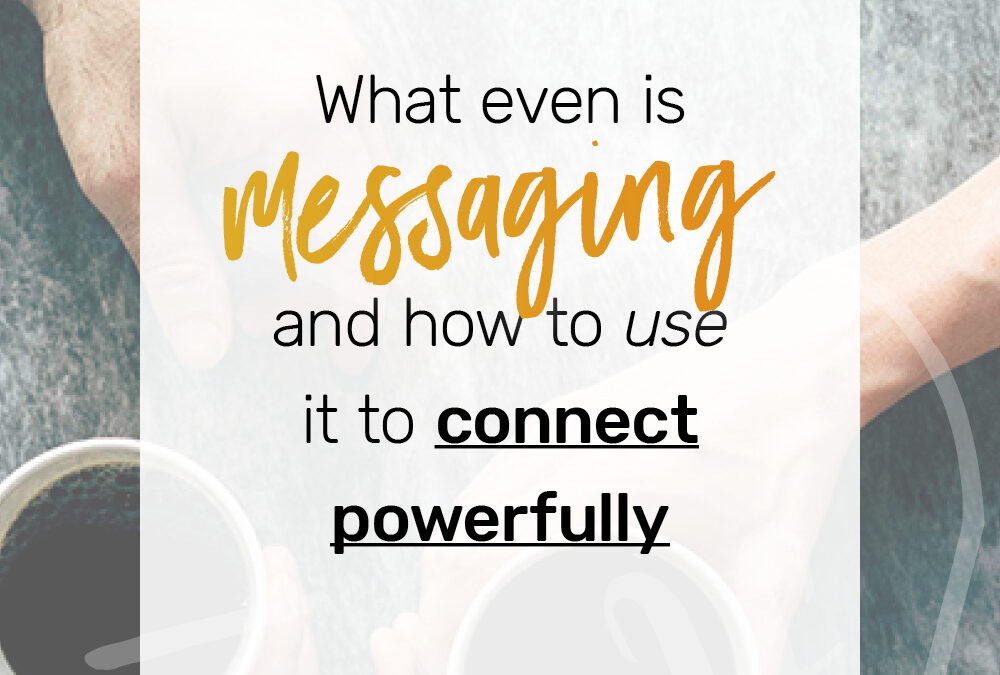
![]()
